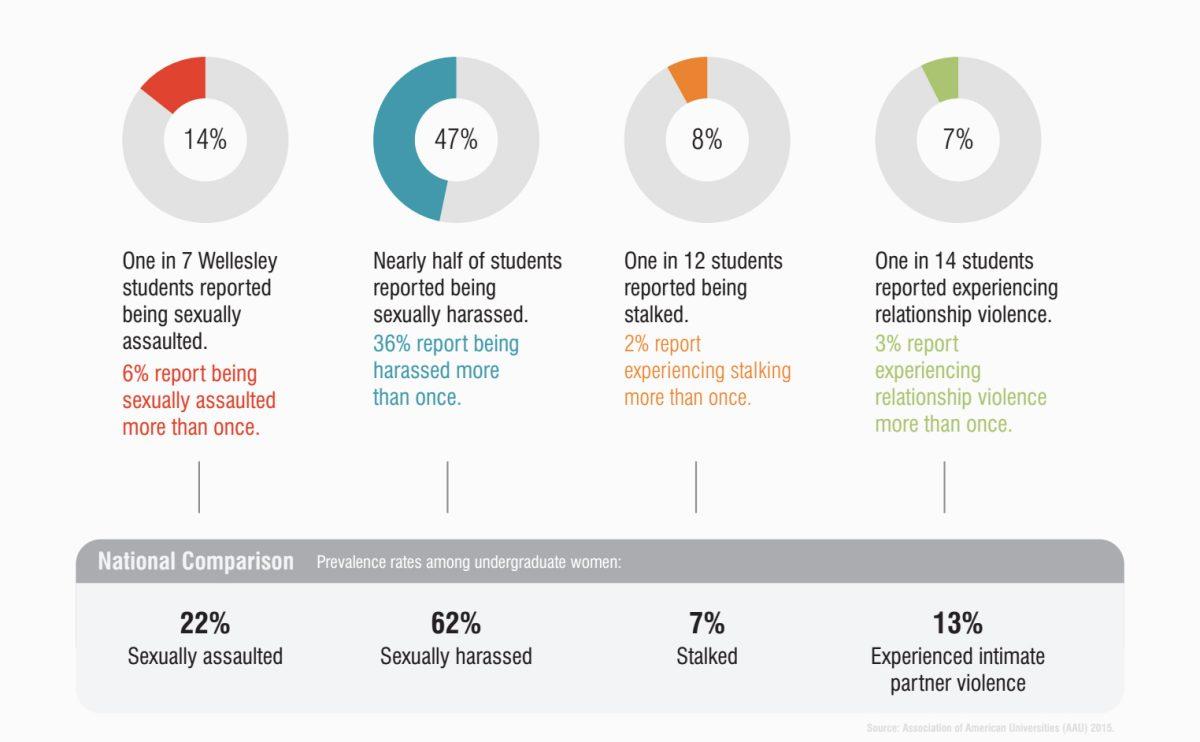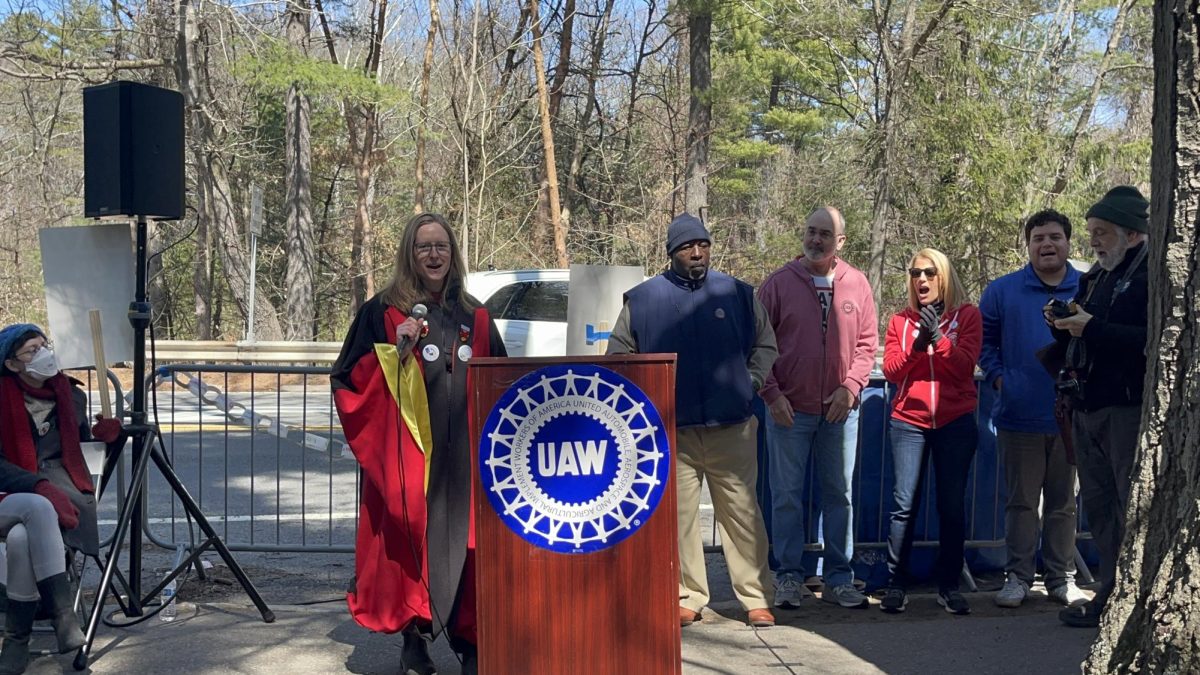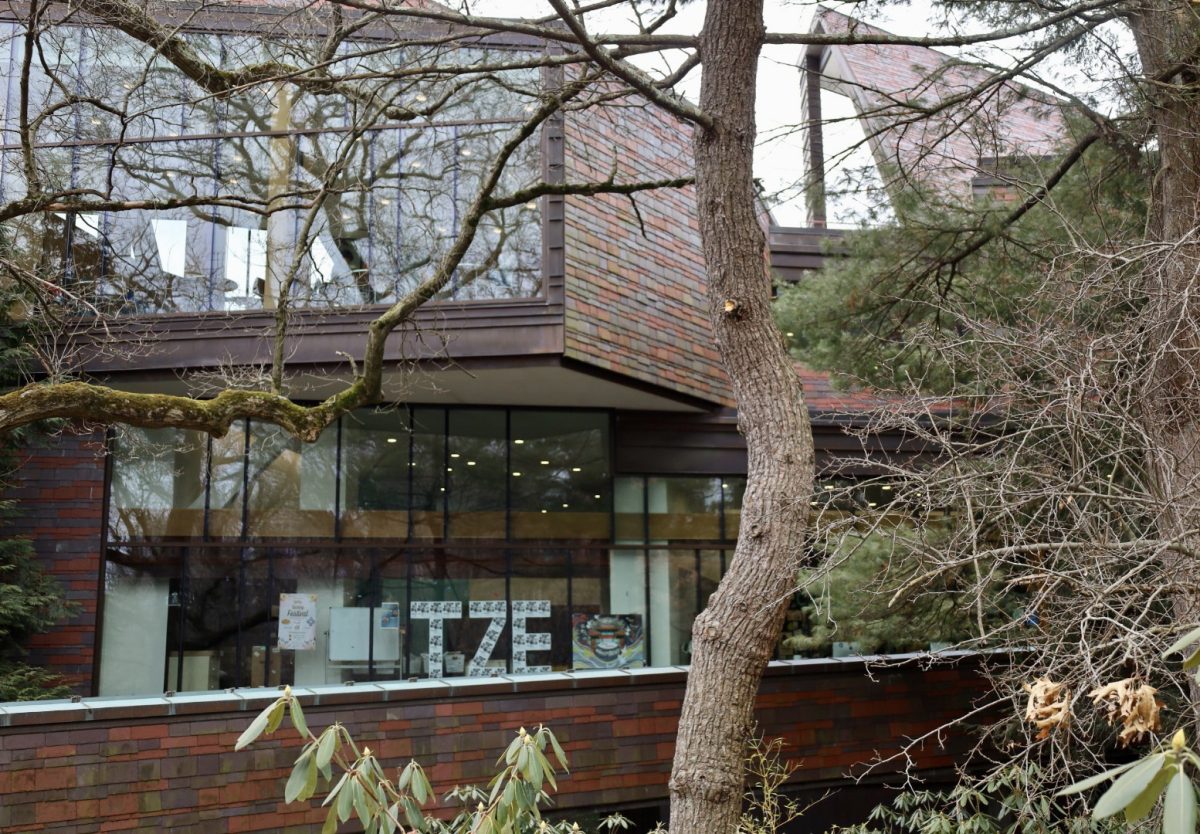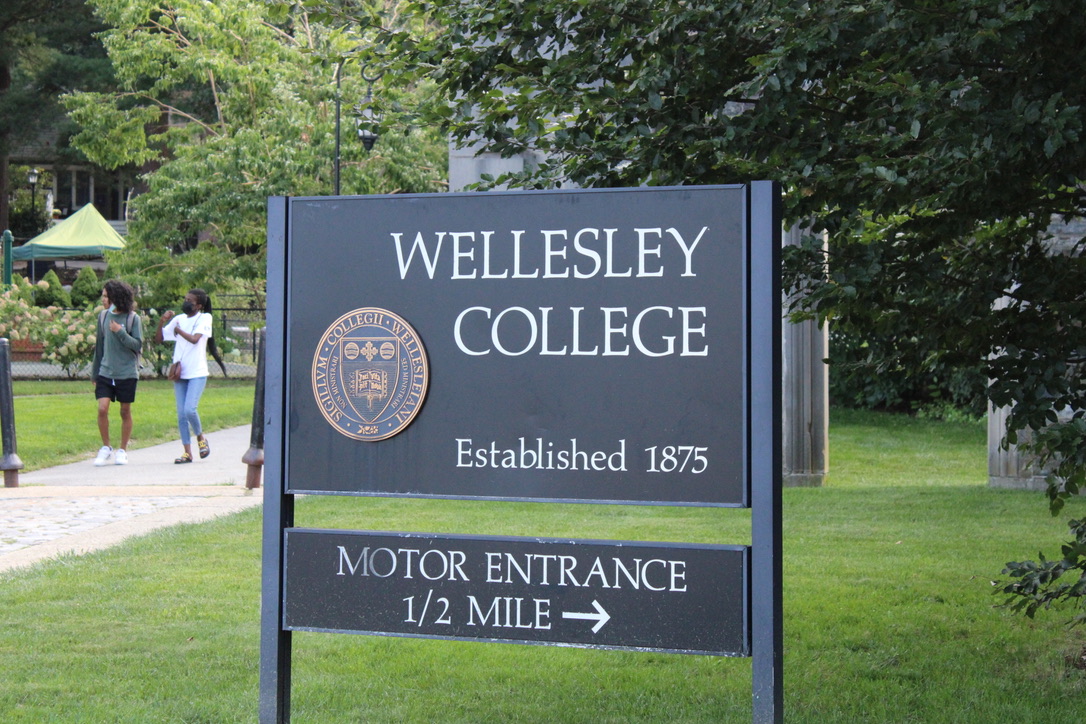Sexual misconduct has recently been a much-debated topic on college campuses across the country, and Wellesley recently administered its first survey on sexual misconduct. The results of the survey led to a report by The Office of Institutional Research (OIR) which shows that many of Wellesley’s statistics about sexual misconduct are lower than national averages.
The report, published in January, is titled “Campus Climate Survey: Sexual Misconduct” and focuses on incidences of sexual assault involving Wellesley students. It shows the results of the survey that was administered in May 2015, as the report says, “to assess the campus climate and identify opportunities for further discussion, programming, and resources” and is available online.
Although surveys of a similar style had been administered before, none have focused specifically on sexual misconduct. According to Pamela Taylor, Assistant Provost of Institutional Planning and Assessment and Director of Institutional Research, it was spearheaded by Elissa Lu, the Associate Director of Institutional Research.
The results of the survey show that many of Wellesley’s statistics were better than the national average among undergraduate women. The fact that Wellesley compares so favorably to the national percentages is a source of comfort for some students.
“One of the reasons I came to Wellesley was because of personal experience with assault and knowledge that Wellesley had fewer instances of sexual assault than other collegiate institutions,” a Wellesley sophomore said.
Shivani Dayal ’18 agreed with that sentiment. “Part of choosing Wellesley and enjoying the experience here is knowing that I don’t have to worry that much about my physical safety. I walk home from the science center at 2 a.m., and I feel totally safe walking on campus,” she said.
However, Kat Hyslop ’17, the Co-President of Sexual Assault Awareness for Everyone (SAAFE), points out that these statistics may not be entirely indicative of the actual frequency of sexual misconduct at Wellesley.
“Statistics detailing the presence of assault as well as other forms of personal violation can be misleading because of the high rates of underreporting and the stigma that accompanies the reporting of gender-based violence. There is a huge culture of silence surrounding sexual violence that can skew numbers. RAINN (Rape, Abuse and Incest National Network) has previously stated that 68 percent of all sexual assaults go unreported. It’s important to approach these statistics in particular with sensitivity and with the understanding that they don’t give a full, true picture of the issue,” she said.
Even though the campus has lower percentages than the national averages, almost half of students reported being sexually harassed, and 36 percent reported being sexually harassed more than once. In addition, 14 percent, or one in seven, Wellesley students reported being sexually assaulted, and six percent reported being sexually assaulted more than once.
The administration has been taking measures to work on further protecting its students. “We are deeply committed to educating and protecting our students, and for the past several years, we have been providing educational programs pre-orientation and beyond that are designed to prevent and raise awareness about sexual misconduct and inform students about available resources. The information we learned from the Campus Climate Survey is so important in shaping and building upon these programs, particularly as we partner with the new Title IX Coordinator to continue to develop even stronger awareness and prevention strategies,” Associate Dean of Students Carol Bate said.
For example, because students reported that 74 percent of these incidents occurred off campus and often involved students from other schools, Wellesley’s Title IX Coordinator Kathy Stewart, the Dean of Students office and Campus Police are collaborating with other institutions in the Boston area to work on prevention and getting students the resources they need.
“I’m a member of the Boston Consortium Group of Title IX Coordinators, and we do meet regularly. I know all of the Title IX Coordinators for the schools that are in the Consortium, such as Tufts, MIT, Babson, Olin. […] And it is incredibly helpful because if something does happen on another campus, I can help our student connect with the right people. […] It’s almost like we’re one big campus trying to break down the walls,” Stewart said.
Wellesley is also in the process of hiring a person whose full-time job will be Title IX Coordinator, since Stewart has many other titles in addition to Title IX Coordinator. Students had an opportunity to ask questions to the two finalists during open events on Feb. 22 and Feb. 24.
The job, as Stewart explained, is to “not only be aware of what’s going on on campus but also to be looking for trends and one of our most important situations, I think, is to make sure whomever is involved in any type of case is a, being treated fairly and b, is getting the resources that they need.”
Stewart believes that having someone fulfill this role full-time will be a great resource for the campus.
“We are in the process of […] making a decision on someone who will have this role 100 percent of the time. And that’s going to be, I think, incredibly important on campus moving forward,” she said.
Nevertheless, sexual misconduct is still an issue to be addressed at Wellesley, and Lisa Barbin, Chief of Police, says that Campus Police will continue to work on it.
“We will continue to educate students and encourage reporting whether it be in person or through anonymous means. Furthermore, we know that the majority of sexual assaults occur off campus and often involve other students; we must continue to work closely with the Campus Police departments of other Boston-area schools to develop stronger prevention and awareness strategies,” Barbin said.
Not only is the administration committed to focusing on sexual misconduct, but so is the student body, especially student groups like SAAFE.
“The campus climate survey has not changed our approach in our programming and handling of SAAFE’s presence on campus. It did what we expected it to do—confirm that issues surrounding sexual assault and violence do exist at Wellesley and SAAFE’s presence on campus is necessary. This is something we’ve always known though, and it is what we dedicate ourselves to. The purpose of SAAFE is to address sexual misconduct on campus in a way that’s effective and also sensitive to the varying experiences held by members of the Wellesley community. That has always been what we do, and that is what we will continue to do,” Hyslop said.
Resources such as SAAFE are incredibly important for students involved with sexual misconduct, a fact that, according to the report, students seem to recognize. The report showed that nine in ten students reported that they would turn to a campus resource, such as the Stone Center Counseling Service, Wellesley College Health Services, the Title IX Coordinator or Campus Police, among others, if they or someone they knew had experienced sexual misconduct.
With help from student groups, the administration plans to continue to work on raising awareness about sexual misconduct and better protecting students in the future.
“We’ll have larger conversations about how do we know over time that the programming and the efforts that college is making is making a difference? […] I’m definitely sure that we’ll do this survey or a survey of this type again, and then that will help us know whether we’re on the right track and what else we need to do in order to improve student awareness and improve outcomes for students around this issue,” Taylor said.
Photo courtesy of Megan Stormberg ’18, Photography Editor






